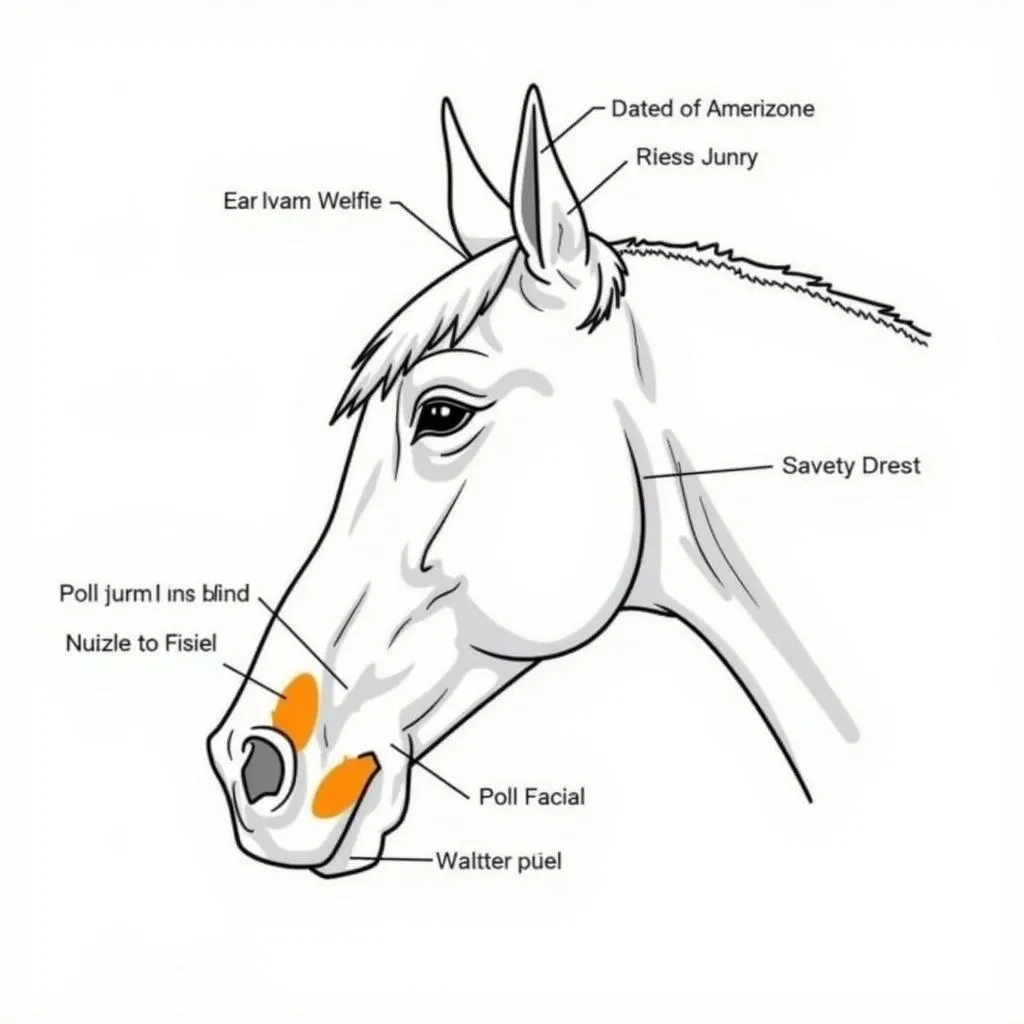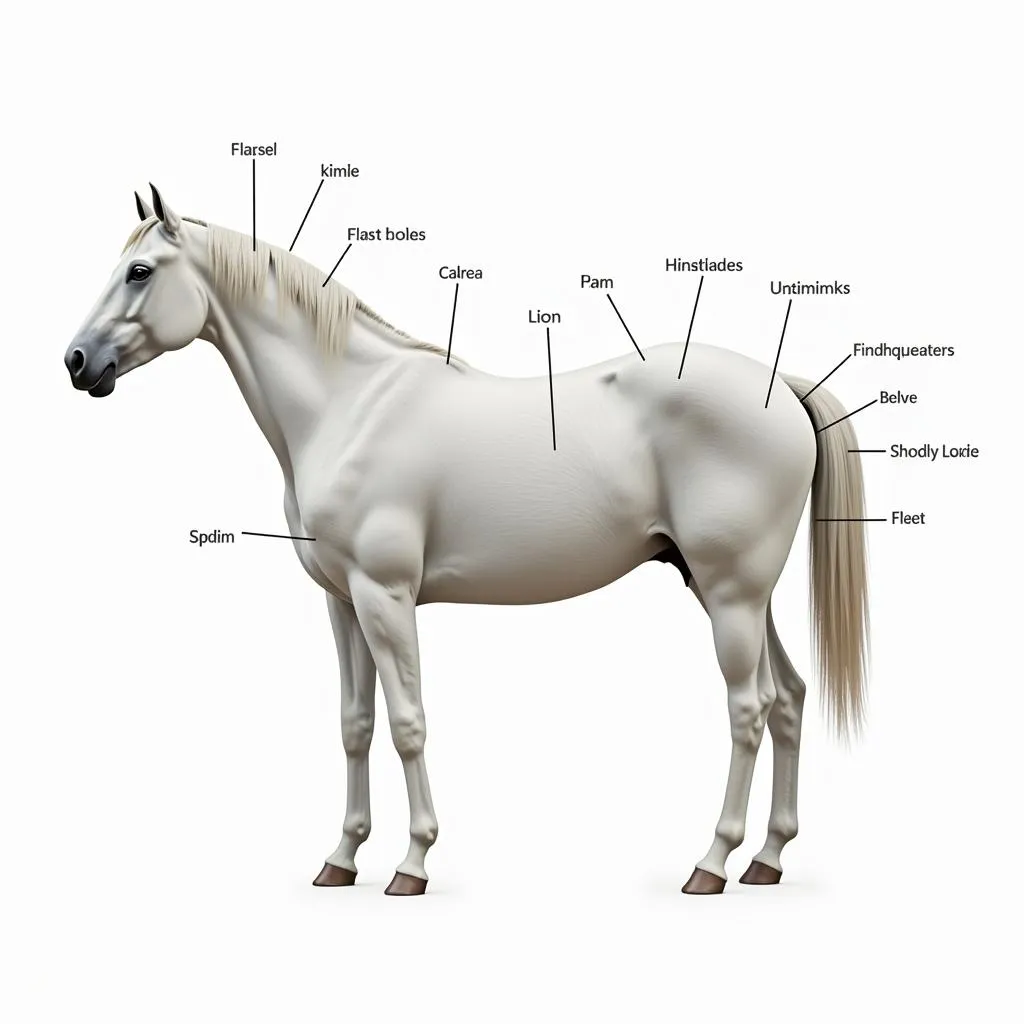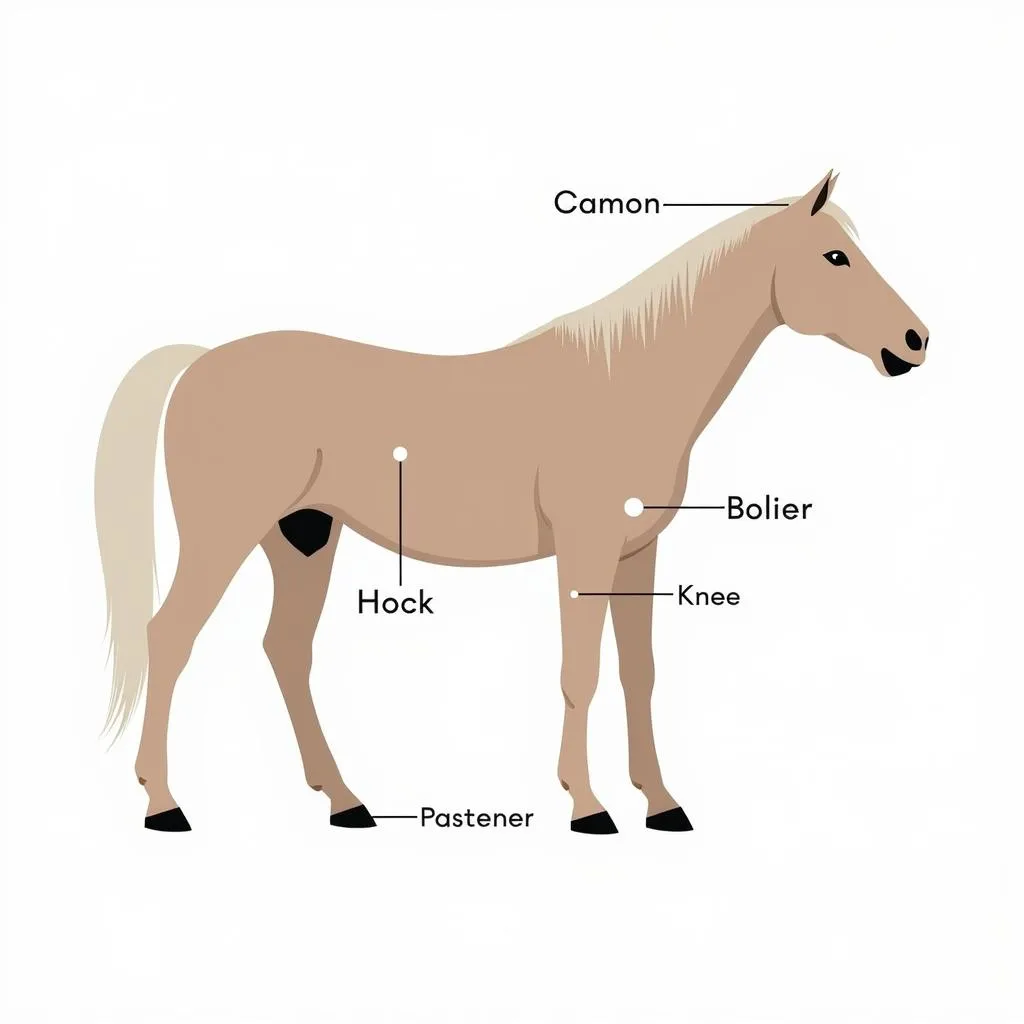Understanding the anatomy of a horse is essential for any horse owner, rider, or enthusiast. Knowing where different parts of the body are located helps you communicate effectively with your veterinarian, identify potential health problems, and provide the best care for your equine companion. This comprehensive guide will walk you through the major parts of a horse’s body, using diagrams and explanations to make it easy to understand.
Head and Neck
 Diagram showing the different parts of a horse's head
Diagram showing the different parts of a horse's head
The head and neck are the horse’s control center, housing the brain and many sensory organs.
- Ears: Horses have large, mobile ears that they use to hear a wide range of sounds.
- Eyes: Horses have excellent eyesight, but they have difficulty seeing directly in front of or behind them.
- Nostrils: The horse’s nostrils are large and flexible, allowing them to breathe easily and smell scents from a distance.
- Muzzle: The muzzle contains the horse’s mouth, which is used for eating and drinking.
- Jaw: The jaw is responsible for chewing food.
- Poll: The poll is the area at the top of the horse’s head, just between the ears. This is a sensitive area, and horses can be quite reactive if touched there.
- Facial Crest: The facial crest is the ridge of bone that runs along the top of the horse’s head from the poll to the nostrils.
- Cheekbones: The cheekbones are the prominent bones on either side of the horse’s face.
Neck
The neck is long and flexible, allowing the horse to reach its head in a variety of directions.
- Mane: The horse’s mane is the long hair that grows along the top of its neck.
- Throatlatch: The throatlatch is the area under the horse’s chin where the neck connects to the head.
- Crest: The crest is the top of the horse’s neck.
- Withers: The withers are the highest point on the horse’s back, located at the junction of the neck and back.
“Understanding the anatomy of the horse’s head and neck is crucial for proper grooming and handling,” says Dr. Emily Carter, an equine veterinarian with over 20 years of experience. “It helps you identify any abnormalities that could be a sign of a health issue.”
Body
 Diagram showing the different parts of a horse's body
Diagram showing the different parts of a horse's body
The body is the core of the horse, containing vital organs and providing the structure for movement.
- Back: The back extends from the withers to the loin.
- Ribs: The ribs are located along the sides of the horse’s body, protecting the vital organs.
- Flank: The flank is the area between the ribs and the hindquarters.
- Belly: The belly is the underside of the horse’s body.
- Loin: The loin is the area between the back and the croup.
- Croup: The croup is the area over the hindquarters, from the loin to the tail.
- Tail: The tail is attached to the croup and helps the horse balance and swat away insects.
Legs and Hooves
 Diagram showing the different parts of a horse's leg
Diagram showing the different parts of a horse's leg
The horse’s legs are designed for speed, agility, and endurance.
Forelegs:
- Shoulder: The shoulder is the joint connecting the leg to the body.
- Forearm: The forearm is the long bone between the shoulder and the knee.
- Knee: The knee is the joint located just above the cannon bone.
- Cannon Bone: The cannon bone is the long bone between the knee and the fetlock.
- Fetlock: The fetlock is the joint between the cannon bone and the pastern.
- Pastern: The pastern is the short, sloping bone between the fetlock and the hoof.
- Hoof: The hoof is the hard, protective covering that encases the horse’s foot.
Hindlegs:
- Stifle: The stifle is the joint that connects the thigh to the lower leg.
- Gaskin: The gaskin is the area between the stifle and the hock.
- Hock: The hock is the joint located just above the cannon bone in the hind leg.
Frequently Asked Questions
Q: What are some common health problems that can affect a horse’s legs?
A: Common leg problems include laminitis, navicular disease, and tendonitis.
Q: What are some important things to consider when selecting a horse?
A: When selecting a horse, consider its conformation, breed, and temperament.
Q: How often should I have my horse’s hooves trimmed?
A: Your horse’s hooves should be trimmed every 6-8 weeks by a qualified farrier.
Q: What are some signs of a healthy horse?
A: Signs of a healthy horse include a bright coat, clear eyes, and a good appetite.
Q: How can I learn more about equine anatomy?
A: You can learn more about equine anatomy by reading books, taking courses, or talking to an equine veterinarian.
Conclusion
Understanding the different parts of a horse’s body is crucial for providing the best care and understanding its unique needs. This knowledge is vital for responsible horse ownership, allowing you to communicate effectively with professionals and identify potential health problems. With this information, you can ensure your equine companion enjoys a healthy and happy life.
For any further assistance or questions, feel free to contact Justus Horses USA. We are here to help you and your horse thrive.
Contact us:
Phone: 0772127271
Email: [email protected]
Address: QGM2+WX2, Vị Trung, Vị Thuỷ, Hậu Giang, Việt Nam.